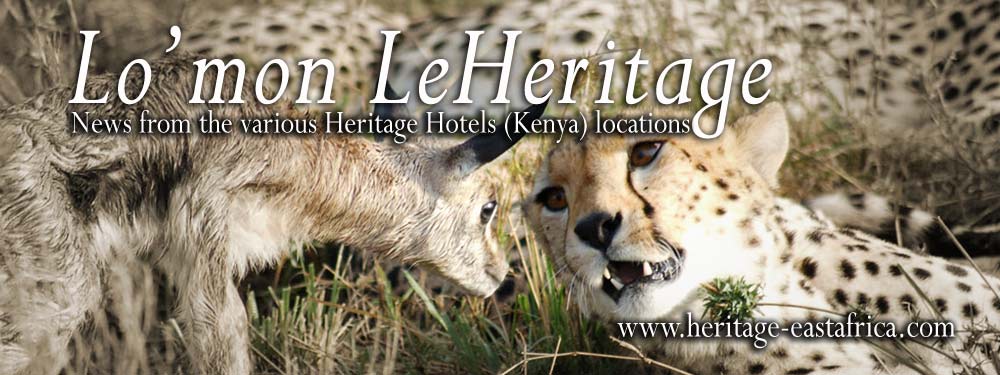Despite the departure of the migrating herds in November last year, game viewing is still good in the Mara. The absence of the normal short rains in December brought on a dry spell that caused most of the animals to remain in the park, where pasture was still available. We started to receive some rain two weeks ago, though these are likely to be short-lived off-season showers.
Large herds of zebra and wildebeest, which form the Loita Migration, came back to the park and settled in the northern part of the reserve. These herds are now concentrated along the northern edge of the reserve, creating a "mini migration" spectacle. Other plains game can be seen in smaller but stable concentrations.
Paradise Plains was one the most attractive places in the Mara this season, with all the general plains game seen in large numbers. However, the large herds in the north started declining after the rains two weeks ago-they were heading back to the Loita Plains where the wildebeest normally calve in February.
At the Great Rift Valley Lodge in Naivasha, our guides reported excellent game viewing at Lake Nakuru Game Park, with regular sightings of rhino, lions, buffalo, leopard and large flocks of flamingo. There was also good birding activity at Lake Naivasha.
To the north, in the Samburu game reserve, there were reports of good sightings of general game, and what we call the "Samburu Five"- the Somali ostrich, gerenuk, Beisa oryx, Grevy's zebra and reticulated giraffe. There were also large herds of elephants that came for a sip or a dip in the Uaso Nyiro river in the heat of day.

Big Cats
Cheetahs:
Cheetahs in the Mara have been seen throughout the beginning of the year, but not without several misfortunes. On 4th of January the Olkiombo pride of lions killed a female and two of her three cubs, near Mara Explorer. The surviving cub then wandered alone vulnerably in the same lion territory, until we rescued it on the 7th of January. The cub was only 3 months old and would have almost certainly died, as it was still dependent on its mother. We took it to the camp where we made it a nice cage and a small playing ground. We are now rearing the cub, which has come to be known by the staff at Mara Intrepids as 'Namunyak', Maasai for "blessed one".

Namunyak has adapted well to the new environment and we hope to release it once it's able to survive in the wild. This may not be soon, though: cheetahs take up to 18 months in their mother's care before they can acquire the hunting and survival skills they need to go out on their own.
Another cheetah with cubs survived a lion attack near Musiara Gate later the same month. We watched in horror as a single lioness went after mother and cubs. Luckily, she lost them somewhere in the croton bushes and the cheetah family escaped.
Lions:
The lion prides in our game viewing areas are still intact and active. This is because food is still available in their territories. The prides in the Mara normally split up when food gets scarce, usually from March, until the arrival of the first migrating herds.
Leopards:
Olive and her cubs, Ayah, Binti and Kali, are still in their usual area along the Talek river next to the Mara Intrepids camp. Lately, however, they have extended their range to the forest between Mara Intrepids and Mara Explorer. The thick forest cover sometimes makes their sighting a bit more difficult, but luckily they don't stay too long before returning to their usual grounds downstream of the camp. These cats have had some very successful hunts in the past month, several of them witnessed by our guests while on game drives.
We will continue to update you with News from the Wild.
Paul Kirui. Chief Safari Guide
Kindly contact: safariguide@mara-intrepids.co.ke for comments or inquiry on the migration and other interesting wildlifel sightings in the Mara, Rift Valley, Samburu and Tsavo West National Park
